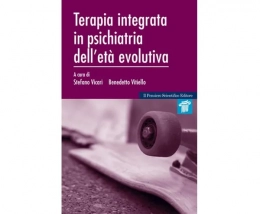Non ci sono recensioni
This consistently illustrated guide makes the process of grading blood cell morphology more immediately practical for laboratory professionals--and more meaningful for patient management.
Table of Contents
Section I: Introduction
General considerations 1-2
Section II: Red Cell Morphology
Anisocytosis 4-5
Poikilocytosis 6-7
Microcytosis 8-9
Macrocytosis 10-11
Hypochromia 12-13
Polychromasia 14-15
Blister cells 16-17
Target cells 18-19
Tear drop cells 20-21
Schistocytes 22-23
Sickle cells 24-25
Spherocytes 26-27
Acanthocytes 28-29
Echinocytes 30-31
Elliptocytes 32-33
Stomatocytes 34-35
Howell-Jolly Bodies 36-37
Basophilic Stippling 38-39
Pappenheimer Bodies 40-41
Rouleaux 42-43
Agglutination 44-45
Section III: White Cell Morphology
Toxic Granulation 48-51
Toxic Vacuolation 52-55
Döhle Bodies 56-59
Hypersegmentation/ Hyperlobation 60-63
Hyposegmentation/ Hypolobation 64-65
Agranular/ Hypogranular Granulocytes 66-67
Cytoplasmic fragments/ Agranular
or Hypogranular Platelets 68-69
Smudge cells 70-71
Section IV: Platelet Morphology
Giant Platelets 74-77
Large Platelets 78-79
Agranular/ Hypogranular platelets 80-81
Platelet Satellitosis 82-85
v
Index
A
Acanthocytes, 28-29
Agglutination, 44-45
Agranular/ hypogranular
granulocytes (hypogranular/
agranular granulocytes), 66-67
Agranular/ hypogranular
platelets, 80-81
Anisocytosis, 4-5
B
Basophilic stippling, 38-39
Blister cells, 16-17
Burr cells (echinocytes), 30-31
C
Codocytes (target cells), 18-19
Crenated red cells
(echinocytes), 30-31
Cytoplasmic fragments, 68-69
D
Dacrocytes (tear drop cells), 20-21
Döhle bodies, 56-59
Drepanocytes (sickle cells), 24-25
Dysplastic granulocytes
(hypogranular/ agranular
granulocytes), 66- 67
E
Echinocytes, 30-31
Elliptocytes, 32-33
G
Giant platelets, 74-77
H
Howell-Jolly bodies, 36-37
Hyperlobation, 60-63
Hypersegmentation, 60-63
Hypochromasia, 12-13
Hypochromia, 12-13
Hypogranular/ agranular
granulocytes, 66-67
Hypogranular/ agranular
platelets, 68-69, 80-81
Hypolobation, 64-65
Hyposegmentation, 64-65
L
Large platelets, 78-79
Leptocytes (target cells), 18-19
M
Macrocytes, 10-11
Microcytes, 8-9
O
Ovalocytosis (elliptocytosis), 32-33
P
Pappenheimer bodies, 40-41
Platelets
Agranular/ hypogranular, 80-81
Giant, 74-77
Large, 78-79
Satellitosis, 82-85
Platelet satellitism, 82-85
Platelet satellitosis, 82-85
Poikilocytosis, 6-7
Polychromasia, 14-15
Punctate basophilia (basophilic
stippling), 38-39
R
Red cell fragments
(schistocytes), 22-23
rosebud, v
Rouleaux, 42-43
S
Satellitosis/ satellitism of platelets
(platelet satellitosis), 82-85
Schistocytes, 22-23
Sickle cells, 24-25
Smudge cells, 70-71
Spherocytes, 26-27
Spur cells (acanthocytes), 28-29
Stomatocytes, 34-35
T
Target cells, 18-19
Tear drop cells, 20-21
Toxic granules, 48-51
Toxic vacuoles, 52-55
vi
Preface
Manual differential leukocyte count, commonly referred to
as “manual diff,” is one of the common hematology tests
performed in clinical laboratories. It generally includes a 100-
cell differential and evaluation of blood cell morphology—it also
serves as verification of automated CBC results. The morphologic
abnormalities of blood cells may be simply reported as present, or
graded as either slight, moderate or marked (ie, 1+ through 4+).
Grading blood cell morphology, when performed appropriately
and in a consistent manner, contributes to the process of
arriving at a diagnosis, at least in some cases. Appropriate and
consistent grading requires a systematic approach, objective and/
or subjective, that must be adhered to by laboratory professionals
in their daily work of reading blood smears. Objective approaches
that have been advocated up until now are helpful but are,
somehow, not widely utilized by laboratory professionals. In an
attempt to make the process of grading blood cell morphology
more practical for laboratory professionals, and more meaningful
from patient management standpoint, the author has prepared
this grading guide utilizing photomicrographs of the relative
differences among various grades of individual abnormalities in
addition to describing the corresponding objective (quantitative or
semiquantitative) differences. If it is true that “a picture is worth
a thousand words,” then Blood Cell Morphology: Grading Guide
should be useful to laboratory professionals engaged in reading
blood smears.
This reference guide to grading blood cell morphology, is divided
into four sections. General considerations of grading blood cell
morphology are introduced in Section I. Specifics of grading
individual red cell abnormalities are defined in Section II. Grading
white cell abnormalities is described in Section III and platelet
morphology grading is charted in Section IV. In each section, each
grading level (1+ to 4+) of individual abnormalities is illustrated by
a photomicrograph taken at 1000x magnification, unless indicated
otherwise, from a Wright or Wright-Giemsa stained blood smear.
I hope that students, teachers, and practitioners of clinical
laboratory hematology will find this guide very helpful in grading
blood cells morphology in a systematic and consistent manner.
Gene Gulati, PhD, SH(ASCP)

![Blood Cell Morphology Grading Guide [Spiral-bound]](https://www.libreriastudium.it/media/cache/sylius_shop_product_large_thumbnail/72/6c/b2d8902df27bf08513b7281824e759987067bccd.jpg)


